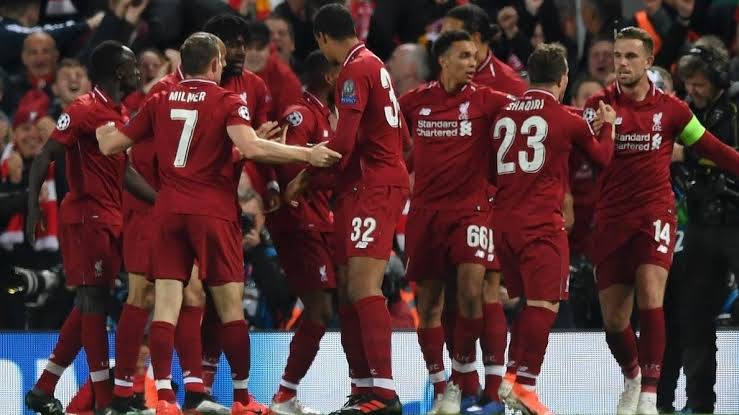
Picture a passage of play that lasts no more than ten seconds. A centre-back miscontrols a pass under pressure, the opposition pounces instantly, a midfielder dives into a duel, the ball breaks loose, a winger arrives first, the crowd rises, a quick square ball is played and the striker scores. Within moments, the stadium is shaking, the opponent is stunned and the scoreboard has changed.
There are no rehearsed passing diamonds, no fifteen-pass sequences, just a violent eruption of energy, speed, and instinct. It is the complete opposite of the football that defined the previous decade. For most of the 2010s, the gold standard was the Guardiola ideal: total domination of territory and tempo, suffocating control, 50 touches before a simple tap-in. Possession was not just a preference but a tactical worldview. If you had the ball, the opponent could not hurt you. If you could structure the play, you could manage the chaos out of the match.
But football has shifted. Defensive structures became too organised, pressing became too universal, and build-up patterns became too predictable. The control era has all but reached its ceiling. Teams could have 65 percent possession and still struggle to create real danger.
Coaches started to ask a different question: is it better to keep the game calm and structured, or to force the opponent into a state where structure is impossible? The tactical answer of the late 2010s- mid-2020s is the rise of “Chaos Football”, a game based not on eliminating volatility, but on manufacturing it.
This is not randomness, nor the absence of tactical thought. It is the deliberate creation of moments where the opponent has too little time to think, too little control of the situation, and too much physical and psychological demand to make the right decision.
The new game is not about hoping for mistakes. It is about engineering them. We moved from an era of control to an era where control is only one path. The new world belongs to teams who can turn ten seconds into a storm.
Chaos football is often misunderstood by traditional analysts and older fans who see vertical balls, loose midfield duels, and frantic transitions and assume it is simply the return of long-ball football. They mistake it for a lack of technique or an admission that modern players can no longer dominate games with the ball.
In reality, this tactical shift is highly modern, highly intentional, and rooted in detailed analysis of how today’s top-level defences operate. At elite level, structured possession has become easier to defend against. Teams spend hours on shape, rest defence, positional anticipation, and pressing traps. The game became a chess match, with coaches reviewing still frames on tablets at half-time.
In this environment, the most unpredictable thing you can do is not slow the game down, but speed everything up beyond the opponent’s ability to process.
Chaos football is better described as “Artificial Transition”, the tactical decision to create situations where the ball becomes disputed, direction becomes uncertain, and players have to react instantly rather than operate within rehearsed patterns.
A team may hit a vertical pass knowing it only has a 40 percent completion rate, because that 40 percent is not the real target. The target is the next action, the second ball, the duel, the loose rebound or ground race that follows. If your side is fitter, faster, and mentally primed to win that next moment, the mathematics become favourable.
One risky pass may create five seconds of unstructured play, and five seconds of unstructured play is often more dangerous than a two-minute possession spell. This is why recruitment has changed. Modern teams want midfielders and forwards with explosive legs, fast reactions, and the ability to win collisions and recover loose balls at speed.
The advantage is not entirely in the first pass but in what the first pass triggers. Chaos football is not regressive. It is the contemporary answer to a game where build-up patterns have been solved and space has shrunk. If structured attacks cannot reliably break down compact defences, then the next logical step is to break the structure itself. In the new era, the duel is a tactic. The second ball is a planned phase. The loose deflection is not a problem, it is the invitation to attack.
Chaos football does not just happen. It is manufactured with clear tactical triggers and coaching principles that reward risk and weaponise the unpredictability of the game. The first shift is in passing intention. For years, a midfielder who completed 95 percent of his passes was considered the model of efficiency. In chaos football, a midfielder who plays a 40 percent-success forward ball may be the one generating more danger.
The vertical pass does not need to reach its target cleanly. What matters is what the pass creates: bodies arriving at full speed, defenders uncomfortable, midfielders turning to face their own goal, and attackers ready to attack the fallout. The second-ball phase has become one of the defining metrics of the modern game. Coaches now evaluate midfielders not just by their range of passing, but by how quickly and cleanly they win collisions, react to ricochets, sprint into challenges, and regain possession in chaotic territory.
Scouting departments track duel win rates, pressing efficiency around turnovers, and ability to recover loose balls inside 2–3 seconds of the initial action. The duel has become the modern playmaker, the moment that opens the entire pitch. One of the most effective applications is the bait trap. Teams now tempt opponents into playing short from the back, showing passing lanes that appear open, and then collapsing on the first receiver like a swarm. The opponent believes they are executing measured build-up play, but in reality they have walked into a time trap.
Within a heartbeat, four or five passing options vanish, and the player in possession has half a second to solve a problem they do not have the space to think about. This is the root of chaos football: the pitch is no longer about width and depth, but about time. If possession football asks, “Can you find the free man?”, chaos football asks, “Can you find him before we arrive?” Matches now hinge on milliseconds. The team that steals time wins the ball, wins the duel, and often wins the scoreboard.








